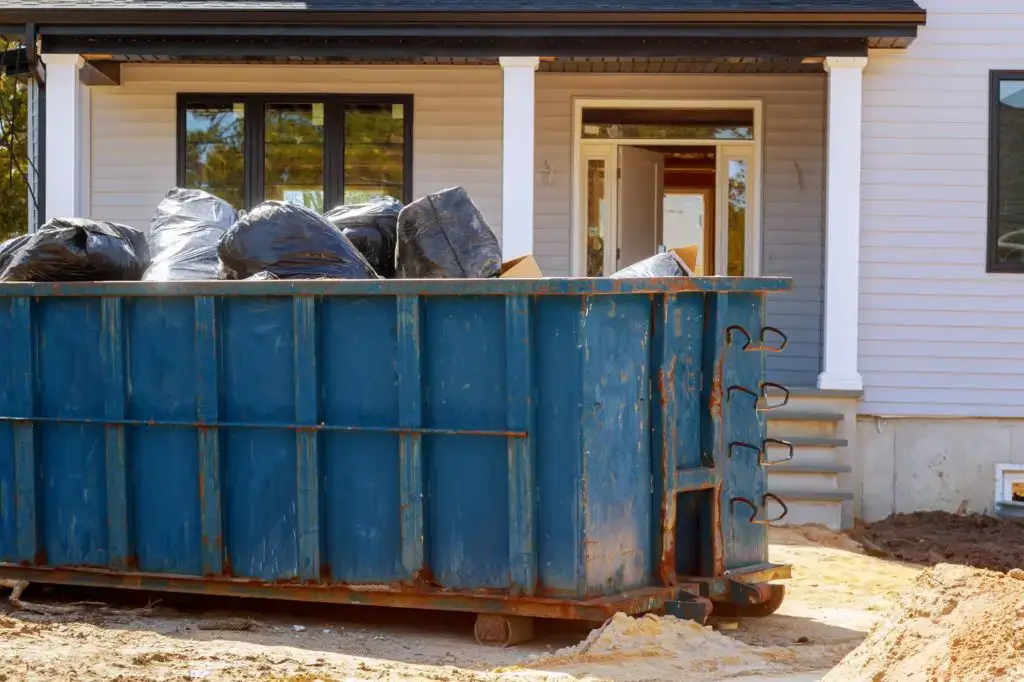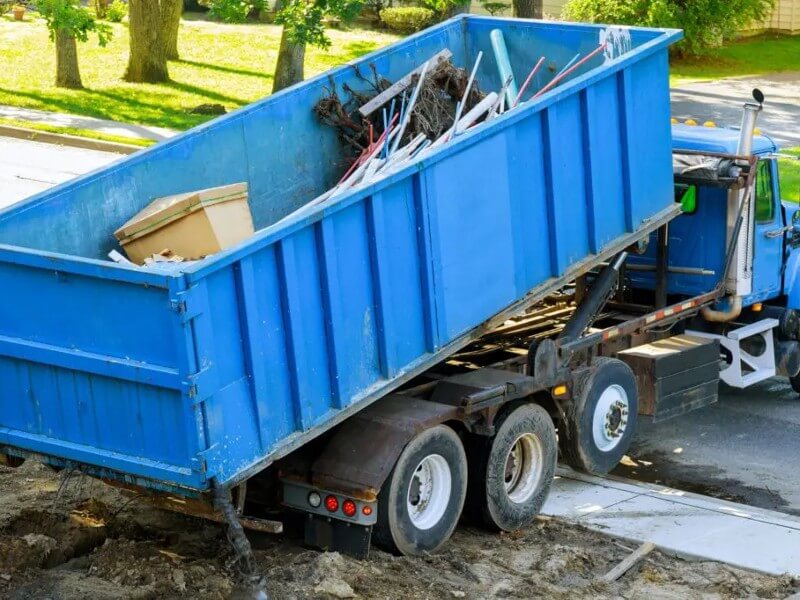Mastering Roll-Off Dumpster Maintenance: Long-Lasting Equipment
Proper maintenance isn’t just about keeping the dumpsters looking good; it’s about ensuring they last longer and perform their best. Every piece of equipment demands care, and roll-off dumpsters are no different. This holds especially true for items as heavily used as dumpsters, where neglect can lead to costly repairs or replacements.
The Importance of Regular Maintenance Checks
Routine checks aren’t a mere formality. They serve as the first line of defense against potential issues. By catching problems early on, one can:
- Minimize downtime: A well-maintained dumpster is less likely to break down, ensuring continuous service.
- Save money: Fixing minor issues can prevent more significant, costlier problems down the line.
- Enhance customer satisfaction: Customers prefer doing business with companies that take pride in their equipment.
It’s not just about spotting problems; it’s about understanding the entire lifecycle of the equipment and being proactive in its care.
Recognizing Early Signs of Wear and Tear
Over time, all equipment shows signs of use, but knowing what to look for can make all the difference. Some common signs that a roll-off dumpster might need attention include:
- Rust spots or corrosion
- Warping or bending of the container walls
- Malfunctioning or stiff wheels
- Issues with the latching mechanism
By being observant and addressing these signs promptly, it’s possible to extend the equipment’s lifespan and ensure its optimum functionality. A keen eye today can save a lot of hassle tomorrow. Keeping a regular maintenance log helps track when and what type of care is needed, ensuring nothing slips through the cracks.
Regular maintenance is like a health check-up. It’s not always about finding something wrong; sometimes, it’s just about confirming everything is running smoothly. And when it comes to the roll-off dumpster business, ensuring each piece of equipment is at its best is a surefire way to stay ahead in the industry.

Cleaning and Sanitation Protocols for Roll-Off Dumpsters
In the dumpster rental business, cleanliness isn’t just a matter of appearance; it’s essential for safety, functionality, and customer satisfaction. Proper cleaning and sanitation of roll-off dumpsters not only ensures a more extended service life but also keeps the equipment compliant with health standards.
Why Regular Cleaning Matters
Regular cleaning of roll-off dumpsters helps to:
- Prevent Rust and Corrosion: Residual waste, especially liquids, can lead to rust and corrode the dumpster over time. Regular cleaning helps prevent this deterioration.
- Avoid Odor Build-up: Dumpsters can start to emit unpleasant odors if waste residues aren’t cleaned. Regular cleaning ensures they remain fresh and customer-friendly.
- Minimize Pest Attraction: Leftover waste can attract pests. Cleaning ensures that dumpsters don’t become a breeding ground for pests like rats and insects.
Recommended Cleaning Procedures
When it comes to cleaning roll-off dumpsters, a systematic approach can be most effective. Here’s a step-by-step guide:
- Empty the Dumpster: Before cleaning, ensure the dumpster is entirely empty and all waste has been removed.
- Pre-rinse: Use a high-pressure water jet to rinse off loose debris and dirt. This initial rinse helps in more effective cleaning.
- Apply a Cleaning Agent: Use a commercial-grade cleaning agent or a mixture of water and detergent. This will help in breaking down stubborn residues.
- Scrub the Dumpster: For best results, scrub the interior and exterior using brushes. Pay attention to corners and seams where waste tends to accumulate.
- Rinse Thoroughly: Once scrubbed, rinse the dumpster again using high-pressure water to remove the cleaning agent and dislodged debris.
- Disinfect: Especially important for dumpsters that handle organic waste, use a commercial-grade disinfectant to kill any remaining germs or bacteria.
- Air Dry: Allow the dumpster to air dry before using it again. This will help in preventing mold and mildew growth.
The frequency of cleaning might vary based on the type of waste the dumpster handles and local regulations. However, as a rule of thumb, regular cleaning after each rental cycle is recommended.
In the end, maintaining a rigorous cleaning and sanitation protocol not only ensures that the roll-off dumpsters look good but also boosts their longevity, improves customer satisfaction, and complies with local health and safety standards. Proper care and attention to hygiene can set a business apart in the competitive dumpster rental market.
Safety Inspections and Repairs for Roll-Off Dumpsters
Ensuring the safety of both employees and customers is paramount in the roll-off dumpster rental industry. Regular safety inspections and prompt repairs play a crucial role in preventing accidents and maximizing the lifespan of the equipment.
The Importance of Safety Inspections
Routine safety inspections can help in:
- Identifying Issues Early: Before minor issues become major problems, they can be addressed, saving time and money in the long run.
- Preventing Accidents: Regular checks can ensure that all components are working correctly, reducing the risk of mishaps.
- Extending Equipment Life: Addressing wear and tear promptly can significantly extend the lifespan of the dumpsters.
- Maintaining a Positive Reputation: A well-maintained fleet indicates professionalism and commitment to safety, which can be a strong selling point to potential customers.
Key Inspection Areas
When carrying out safety inspections, certain areas require special attention:
- Latches and Hinges: Ensure that these are working smoothly. Any signs of rust, damage, or misalignment should be addressed immediately.
- Flooring and Walls: Check for holes, severe dents, or signs of corrosion. Even minor damage can weaken the structural integrity of the dumpster.
- Wheels and Rollers: These should move freely without any obstructions or signs of wear. Replacing worn-out wheels can prevent more significant issues down the line.
Addressing Repairs Promptly
Once an issue is identified during an inspection, swift action is crucial. Here’s a suggested approach:
- Prioritize: If the damage poses immediate safety risks, the dumpster should be taken out of service until repairs are completed.
- Use Qualified Personnel: Repairs should be carried out by trained and experienced personnel to ensure they are done correctly and safely.
- Regularly Review Repair Protocols: Stay updated with the latest repair techniques and best practices in the industry. This can help in ensuring the repairs are durable and effective.
- Document Everything: Maintain a record of all inspections and repairs. This can be useful for future reference and to demonstrate compliance with safety regulations.
Concluding, regular safety inspections and timely repairs are non-negotiable aspects of roll-off dumpster maintenance. They not only protect the company’s assets but also safeguard its reputation, employees, and customers. By adopting a proactive approach to safety and repairs, roll-off dumpster businesses can ensure their equipment remains in top-notch condition, ready to serve and exceed customer expectations.
The Role of Technology in Roll-Off Dumpster Maintenance
In today’s rapidly evolving technological landscape, even industries rooted in traditional operations, like roll-off dumpster rentals, aren’t left behind. Implementing modern technology in dumpster maintenance can streamline processes, ensure timely checks, and optimize operations.
Digital Maintenance Schedules and Alerts
- Automated Scheduling: Through specialized software, businesses can set up periodic maintenance checks, ensuring that no dumpster misses a routine inspection.
- Instant Alerts: If a potential issue is detected, either by a sensor or during a manual check, the system can send instant notifications to the management, hastening the repair process.
- Historical Data Access: These systems often store historical data, making it easier to track the wear and tear on a particular dumpster over time and anticipate potential future issues.
Sensor-Based Monitoring
Modern sensors, often compact and easy to install, have become game-changers in equipment maintenance:
- Moisture Sensors: Especially relevant for dumpsters, these sensors can detect unwanted moisture levels, which can be an early sign of rust or decay, allowing for preventive action.
- Structural Sensors: By detecting undue stress or strain on the dumpster walls or floor, these sensors can indicate when a dumpster is overloaded or if there’s a structural problem that needs attention.
Mobile Applications for Maintenance
Many software providers now offer mobile applications, making maintenance management even more convenient:
- On-the-Go Reporting: Employees can report issues directly from the field, uploading photos or notes directly into the system.
- Remote Monitoring: Managers can view real-time data about the condition of their dumpsters, even when they’re off-site, ensuring constant oversight.

Looking Ahead: Brighter Days for Roll-Off Dumpster Maintenance
The journey of maintaining roll-off dumpsters has evolved considerably, and with the incorporation of modern practices, methods, and technologies, the road ahead appears even brighter. By embracing these advancements, businesses in the dumpster rental industry can ensure their equipment not only stands the test of time but also remains safe, efficient, and ready for the tasks at hand. As we march into the future, it’s evident that those who prioritize maintenance, rooted in both traditional know-how and innovative tech, will lead the pack, guaranteeing top-notch service and longevity in the business.
FAQs
1. How often should a roll-off dumpster be cleaned and sanitized?
Regular cleaning should be conducted after every rental cycle to ensure the hygiene and appearance of the dumpster. For sanitation purposes, a more thorough cleaning might be required, depending on the type of waste that was disposed of.
2. What are common safety issues to look out for during inspections?
Common issues include rust, structural damages like dents or cracks, malfunctioning parts, and wear and tear on wheels or the lifting mechanism. Regularly inspecting these components can help preemptively identify potential hazards.
3. How can technology help in maintenance tasks?
Technology can assist in various ways, from automated inspection systems that detect damages or wear and tear, to tracking software that schedules regular maintenance checks, ensuring that no dumpster goes too long without a proper review.
4. How often should safety inspections be conducted?
A routine safety inspection is advisable after every few rental cycles or at least once a month. However, if the dumpster has been used for heavy-duty tasks or potentially hazardous materials, an immediate inspection might be warranted.
5. Are there specific repair professionals for roll-off dumpsters?
Yes, there are professionals who specialize in roll-off dumpster repairs. It’s crucial to choose those with experience in the field to ensure repairs meet industry standards and safety protocols.


